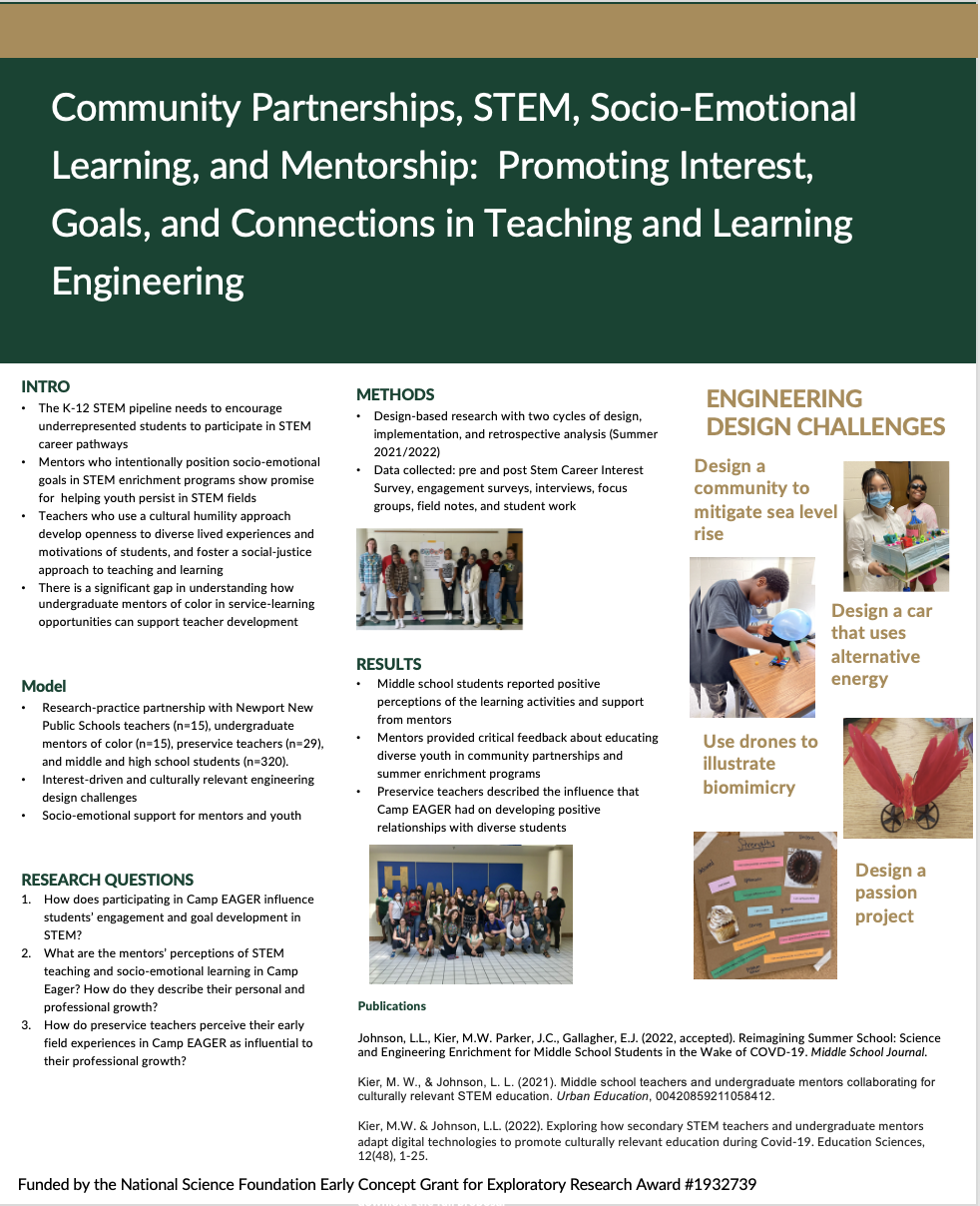New possibilities for broadening the impacts of middle school engineering through a partnership between teachers and underrepresented STEM undergraduates
Engineering design tasks allow students to apply science concepts to solve problems and understand the practical value of scientific knowledge. Yet, it can be challenging for science teachers to find ways to support students to clearly draw connections between the scientific ideas behind engineering problems and the ways in which engineering solutions interact with scientific phenomena. It is also challenging for teachers to make connections between science and engineering in culturally responsive ways. This exploratory project addresses these challenges by examining how pairing secondary teachers in high-need schools with undergraduate engineering students influences teachers' curricular choices and practices to teach science and engineering in culturally relatable ways to students who are currently marginalized by the educational system. The project applies a multiple case study design to understand collaboration dynamics between teachers and undergraduates, how they negotiate choices in curriculum and instruction, and how they perceive their collaborations influence students' abilities and identities in STEM.
